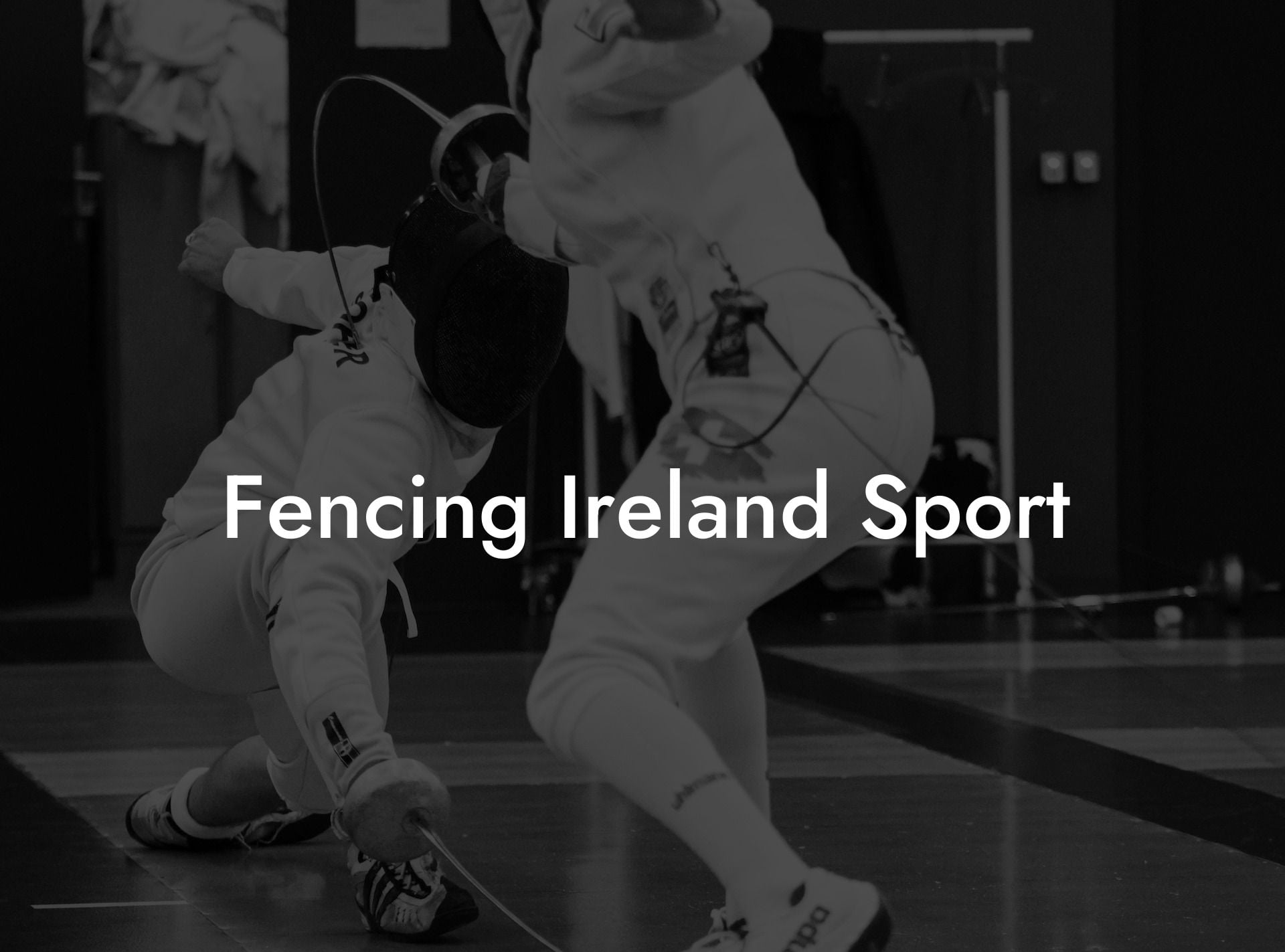Discover the exhilarating world of fencing in Ireland and explore the vibrant community and history behind this noble sport. Learn about the different types of fencing prevalent in the region and the many benefits of participating in this exciting activity. Whether you're a seasoned fencer or new to the sport, our comprehensive guide below will provide everything you need to know about fencing in Ireland.
Fencing Ireland Sport Table of Contents
The History of Fencing in Ireland
The History of Fencing in Ireland
Fencing has a rich history in Ireland, with roots that date back to ancient times when warriors wielded swords in battle. As the sport developed and became more refined, fencing clubs began to emerge across the country. Today, the sport continues to thrive in Ireland, with numerous clubs, schools, and organizations dedicated to promoting and nurturing fencing talent in the nation.
Types of Fencing Available in Ireland
Within the world of fencing, there are three primary disciplines - foil, epee, and sabre. Each weapon has its techniques, rules, and strategies, providing fencers with a unique experience. In Ireland, the most popular discipline is the epee, but all three disciplines are actively practiced and embraced.
Foil Fencing
Foil fencing is the most technical of the three disciplines, placing a strong emphasis on precision, timing, and finesse. The foil is a lightweight weapon with a flexible blade, and points are awarded by making contact with the opponent's torso. Foil fencers wear a metallic vest called a lame that covers the valid target area.
Epee Fencing
Epee fencing allows the most freedom in terms of target area, as any part of the body is considered valid. The epee is heavier than the foil and features a stiff blade with a large bell guard. Precision and accuracy are crucial in epee fencing as points are awarded for the first fencer to make contact with the opponent, regardless of which fencer initiated the attack.
Sabre Fencing
Sabre fencing is the most aggressive of the three disciplines, offering the opportunity for fast and thrilling bouts. The sabre is a cutting weapon, meaning fencers can score points with both the edge and the point of the blade. The target area includes the head, torso, and arms, and fencers wear a metallic mask and jacket similar to the foil fencer's lame.
Benefits of Fencing
Participating in fencing offers numerous physical, mental, and social benefits, including:
- Improved cardiovascular fitness and endurance
- Enhanced muscle strength, balance, and coordination
- Boosted mental agility and problem-solving skills
- Increased self-esteem and confidence
- Fostering camaraderie and forming lifelong friendships
Fencing Ireland Sport Example:
Imagine walking into your local fencing club in Dublin, ready to experience your first taste of epee fencing. As you prepare by donning the necessary protective gear, you are surrounded by fellow fencers who share your passion for the sport. Together, you practice your footwork, warm-up your muscles, and mentally prepare for the bouts ahead.
Once the matches begin, you find yourself immersed in the techniques and strategies unique to epee fencing. With each bout, you feel your agility and stamina improve, and you relish the thrill of competition. As you leave the gym at the end of the day, you can't help but feel proud of your accomplishments and eager to continue honing your fencing skills.
Fencing in Ireland is a sport steeped in history, passion, and community. Embrace the excitement of this dynamic activity and fully immerse yourself in all that fencing has to offer – from technical skills to personal growth and treasured friendships. We hope our guide has shed light on the world of Irish fencing and inspired you to explore further. If you've enjoyed this article, be sure to share it with fellow fencing enthusiasts and discover more engaging guides and resources at Anchorage Fencing Club.













